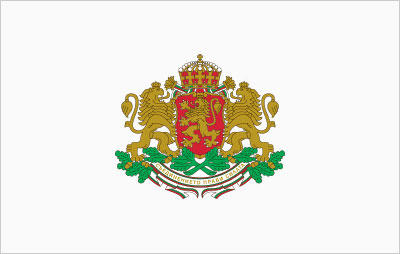Minister Pavlova: The Number of Municipalities would not be Changed
Minister Pavlova: The Number of Municipalities would not be Changed
By Ministry of Regional Development and Public Works
The number of municipalities will not be changed, as no municipalities will be closed or erasured, because the issue refers to areas and planning regions. This was stated by the Minister of Regional Development and Public Works, Mrs. Lilyana Pavlova for the Litze v Litze broadcast regarding the necessity to revise the territorial division of the country in line with the European requirements in future.
She clarified that there is European regulation, since 2003, according to which when certain territories are being selected to receive European grants or when comparing regions, cities, municipalities or countries, they have to be compared in number of population, territorial or other coverage. Namely for these purposes three levels have been established – NUTS 1, NUTS 2, NUTS 3, in compliance with the Regulation. Bulgaria as a country comes under NUTS 1. Level 2 or the so called NUTS 2 under the European statistics of the regions are six planning regions in the country– the Northwestern, the North Central, the South Central, the Southwestern, the Northeastern, the Southeastern.
After 2014 – 2020 programming period, as for the following one, starting in 2021, we will have to present the territorial division, complying with the requirements of the European regulation.
After the last census and the data for the number of the population and other indicators from the end of 2015 there is a change regarding level 2 – the six planning regions, as there are regions that are not in line with certain requirements, as well as level 3 - the 28 regions. These regions do not meet the criteria for statistical purposes.
Northwest Bulgaria is one of the planning regions, which no more meets the requirement for 800 thousand people living on its whole territory. This region can’t be a separate planning region because less than 800 thousand people live there. The North Central region, where the population is about 810 thousand people at the end of 2015, is another one following the tendency.
Sofia is a very advanced region. The city of Sofia as a separate region already meets the average European ones regarding economic development, while population is on an equal level with all European capitals. From this point of view it will form a separate region as there is more than 75% GDP as it is in all average European countries. Namely for this reason all regions will have to be reviewed, as Sofia remains a separate region for planning. It should be considered how to group the other regions in order to meet the requirement for 800 thousand people, said Pavlova.
The requirements for level 3, to which now 28 areas are equated, is for at least 150,000 people across a region in order to be considered as an area that can receive targeted funding according to the European regulations and requirements.
One third of the areas in the country are under 150,000 people, namely Vidin, Vratsa, Lovech, Montana, Kyustendil, Pernik, Razgrad, Silistra, Smolyan.
There will be two options towards 2020 in order to be able to provide targeted funding from the new European funds. One of them is to consolidate the 28 regions so they will be reduced to 20 or 16 depending on the decision taken.
Another option has been considered in the strategy for decentralization which is to keep all 28 areas but for the purposes of the European statistics they won’ t be defined as level 3. The future planning regions will be defined as level 2 of local government and their governors will be chosen. The areas themselves will keep their status and number and will be a division of the larger planning region.
The Regulation as well as the regional policy provides many options, but this a forthcoming debate to choose the best model in the next few years, noted the regional minister. The aim is to have a targeted policy for investments and infrastructure by defining one territory.
Regarding the topic about the cadaster Minister Pavlova reminded that currently the cadaster map covers only 22% of the country. Each area should have underground and ground cadaster. She commented on the benefits arising from the adopted amendments to the law on cadaster. Automatically the municipal agriculture offices, providing sketches and maps of the restored agricultural property, could add them in the cadaster, in order to be digitized and to clear the errors, thus 90% of the territory of the country will be covered by a cadastral map. The services will be provided by the Geodesy, Cartography and Cadastre Agency, which means that owners will be able to receive on-line information for their real estate via mobile phone, computer. The Minister reminded that the properties will also have an identification number.
Sketches will not be required after the merger of the cadastral and the land register as every local or state administration will be able to print a sketch in administratively.
Minister Pavlova reminded once again that tolls have been envisaged only for heavy goods vehicles over 3.5 tons, as for passenger cars will still be used vignettes. She commented on the National Programme for Energy Efficiency of Multi-family Residential Buildings, stressing that it is still free and will be free for the first three years. After 2018 the 100 percent grant will be reduced step-by-step in order co-financing to provide by the citizens participating in it. In the low on the state budget we set another BGN 1 billion, said Minister Pavlova, adding that there are 2000 buildings on which work is under process and there are another 2000 buildings waiting for renovation.




